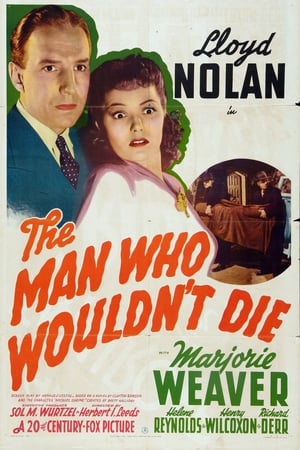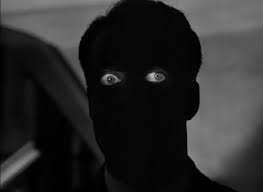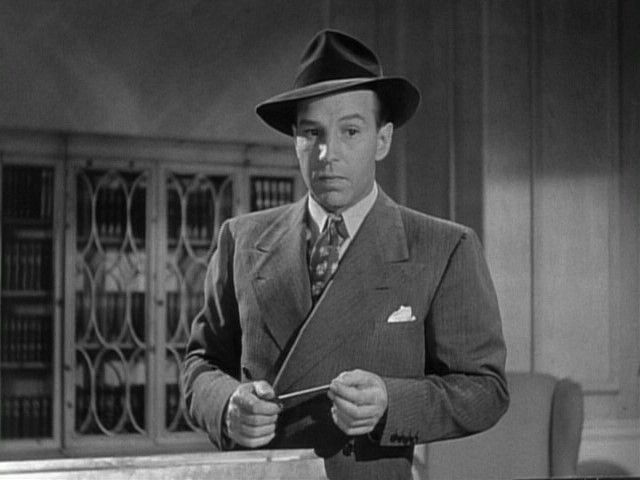IMDb meta-data is runtime 1 hour and 5 minutes, rated 6.7 by 336 cinemitizens.
Genre: Noir, Horror, Comedy.

Verdict: Spooky and snappy.
It was a dark and stormy night as moody, muddy, and misty camera angles play over the dark mansion when a gun shot is heard from within. The front door of the mansion opens and three men emerge from it hefting a bundle into the trunk of a car and drive off. Through the wind and lightning the camera follows. They extract a deadman from the trunk and bury him on the vast grounds of the estate, while in the bushes they are silently observed by a solidarity and soggy onlooker. Whew! All of this before a word is spoken.
While this is going on, excited Daughter returns to the mansion to announce her wedding, finding her step-mother distracted, as her damp father and his two retainers return from their secret nocturnal errand. Bubbling though she is, Daughter realises something is amiss, the more so later when a spectral figure fires a gun at her while she lies abed. In the subsequent fuss, Father, Step-Mother, and retainers deny a shot was fired, while casting side-long glances at each other.
Despite being treated like an hysterical child, Daughter knows what she saw, and off-camera she places a secret phone call to the 4F Michael Shayne. Who else!
There is fine cinematography of the old dark house, the constant rain with thunder and lightning, and most of all the spooky and spectral figure who keeps reappearing in the night, he of the title.

There is much to’ing and fro’ing, mistaken identities, a bemused butler, a befuddled lawman, an intrigued undertaker, a pompous father, a scheming step-mother, a strange laboratory in the basement, plotting retainers, all in all it is a veritable school of red herrings in which Shayne fishes.
This is an entry in the Michael Shayne series started in 1940, starring Lloyd Nolan as the eponym.

He made a career out of playing the New York City Irishman, following in Pat O’Brien’s footsteps, though he was born and reared in San Francisco, attending Stanford University until catching the acting bug. He spent virtually no time in NYC, least of all Flatbush and Brooklyn, except for location filming. While his Irishisms are gratuitous in this film, he delivers them with an effortless panache. He is described as ‘an actor’s actor,’ whatever that means.
The excellent screen play was by Arnaud d’Usseau, California born, but who took this name for caché, says inter-web gossip. He was later black-listed thanks to the efforts of Elia Kazan, which brought d’Usseau’s career to a premature end.
Released on 1 May 1942, within a week Corregidor surrendered and 12,000 GIs became POWs to join a like number captured on Bataan. You would never know the war was on watching this film, which perhaps was the aspiration of the filmmakers, because none of the news at the time was good and it got worse. As the film travelled the country the news reels preceding would have covered Corregidor. The Bataan Death March was censored until 1944.
Skip to content
